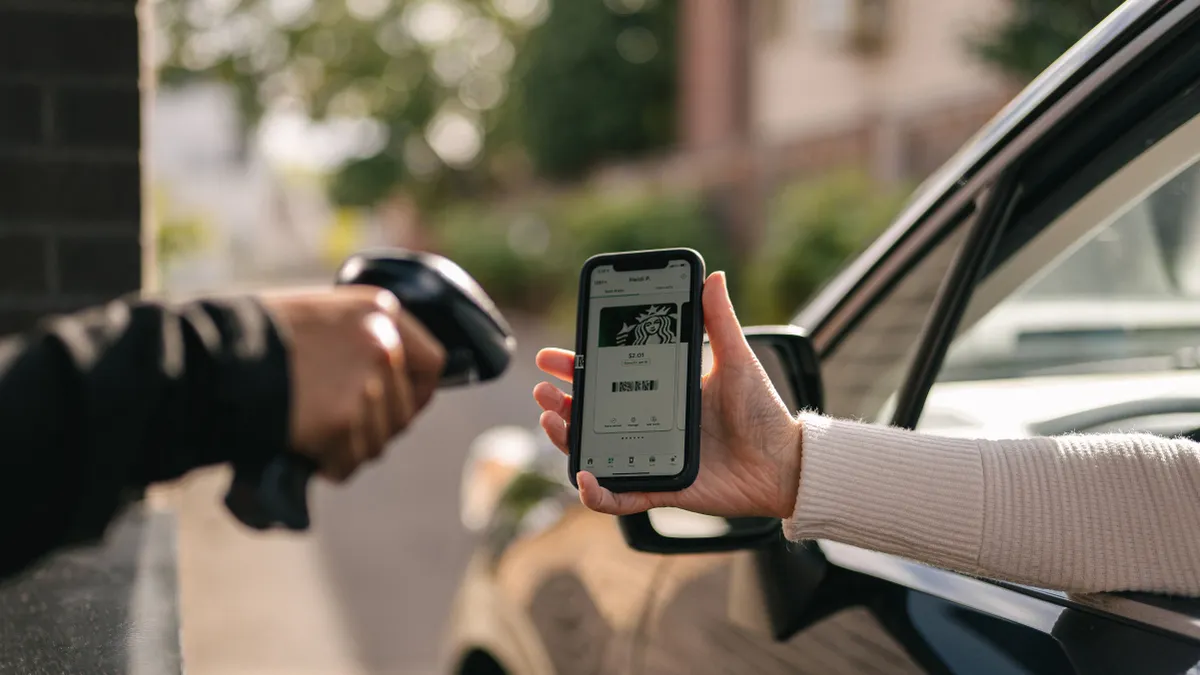Dive Brief:
- A new report from market research company Incisiv finds that digital sales will make up more than half (54%) of limited-service and quick-service business by 2025. This marks a 70% increase over pre-COVID estimates. Though restaurants have been forced to quickly scale their digital capabilities amid the pandemic, plenty of runway remains for digital growth in the restaurant space. According to the report, overall digital maturity in the segment remains a "low-medium."
- Share of sales through delivery is expected to grow to 23% in 2025, versus pre-COVID forecasts of 15%, and about 90% of limited service restaurants in the U.S. and Canada work with third-party delivery services. Curbside adoption has experienced a five-fold increase, growing from 15% to 71% during the pandemic. According to the study, this marks the most advanced segment for growth among all retail segments.
- The top limited-service and quick-service brands in Incisiv's 2020 Restaurant Digital Maturity Benchmark are Starbucks, Panera and McDonald's, respectively. Though Starbucks took a big hit at the start of the pandemic when it lost much of its "third place" consumer base, Q4 signaled significant recovery, with same-store sales down only 9% compared to a 40% drop in Q3.
Dive Insight:
Unsurprisingly, chains with high digital maturity scores have experienced minimal revenue declines during COVID-19 compared to other companies, according to the report. During Starbucks' Q4 call, CEO Kevin Johnson said its digital customer relationships leaves it "very well positioned" and that investing in drive-thru and mobile platforms have been key to recovery. Starbucks has been in the digital game for nearly a decade — it was one of the first restaurants to launch an app in 2011.
Panera also has a strong digital infrastructure that has insulated it from pandemic pressure. The chain launched capabilities for digital ordering, payment and operations in 2014 as part of its Panera 2.0 initiative. Having that system in place allowed the company to pivot quickly during the pandemic, adding curbside pickup in just seven days, for example. Panera differentiated itself with this channel by adding geofencing, which signals customers' arrival to the back-of-the-house so employees can have food ready quickly.
McDonald's benefits from its vast drive-thru system, which made up more than 90% of its sales during Q2 2020. The chain has also been able to shave down drive-thru times by almost 30 seconds because of its investment in Dynamic Yield menu boards, which streamline the ordering process using artificial intelligence. The chain is pressing the gas on its digital capabilities, recently introducing the Accelerating the Arches strategy that optimizes its digital presence, including a new loyalty program offering personalized orders across all digital touchpoints.
McDonald's focus on a new loyalty program should continue to position the chain well, as the Incisiv report indicates that consumers want customizations and recommendations as they order digitally. Chains focused on checkout and payments, including Starbucks, will also be ahead of the curve. Fifty percent of guests prefer paying from a mobile wallet, but just 20% of limited-service chains provide expanded payment options.
The Incisiv report underscores just how critical digital channels have become and will continue to be in a post-pandemic environment. According to the report, chains "must look holistically at how changes in behavior must be addressed from a technology and process perspective." More than 60% of restaurants plan to invest in their mobile channels, increasing competition in this channel, so restaurants will need to get creative to stand out among rivals.









